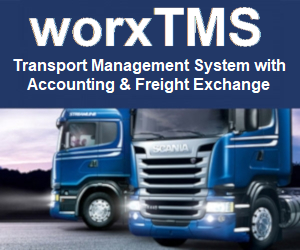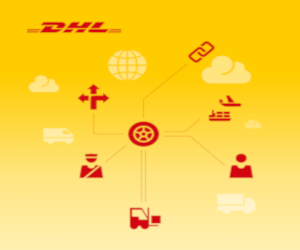How to effectively manage transport logistics has become a key topic of conversation among both shippers and carriers. Freight costs are rising, capacity is tight and changing customer buying behaviours are having a direct impact on operations. The landscape looks very different from a few years ago, there is an escalating trend towards more frequent deliveries and smaller, more fuel-efficient, vehicles.
Shippers, whether they are managing their own fleet or outsourcing their transport requirements to third parties, need real-time visibility into their daily operations.
Manufacturers, distributors, and retailers are continuously looking for better ways to save costs and improve their processes while being able to view their performance in real-time. A Transport Management System (TMS) has become an essential tool. More than 80% of medium-sized businesses use a TMS while in large businesses, it is 98%.
What can a TMS do?
A TMS is a technology tool that can efficiently and economically manage delivery operations across the supply chain. The main aims are to improve fleet performance through better decision-making and to reduce costs. Essentially, you can track anything, anywhere at any time. TMS’s come in different forms but the best ones include most of these features:
Types of available TMS’s
Modern TMS’s that are designed for mid-size businesses are cloud-based software-as-a-service (SaaS) solutions. A TMS can be part of a broader supply chain full-suite of services or be a stand-alone system. Most are easy to implement, are low maintenance and importantly, can be accessed by employees remotely. TMS technology uses mobile applications (apps) extensively for communication.
Examples of popular TMS tools for mid-size businesses are Shiptrack (by Descartes), Blujay, eLogii and Onfleet. These are suited to medium-to-high volume shippers that use multiple carriers, especially those with less-than-truckload (LTL) requirements such as retailers, small manufacturers, and distributors. As your business grows in complexity, e.g.., more loads per week, more carriers, multiple modes, more staff, exports) you may need to upgrade.
A sophisticated TMS such as Mercury Gate or Freightview will provide extra capabilities for managing global trade and cross-border movements across many industries. Solutions like this are concerned with export control regulations, ever-changing trade agreements and embargoes. Such tools include the information needed about localised terminology, languages, currencies, and units of measure according to geographic requirements. Larger organisations typically use full-suite ERP systems that include a TMS module such as SAP or Oracle.
Specialised TMS features
Some TMS applications fulfil specific needs. E-Commerce requires a greater focus on customer management and satisfaction. Solutions such as Metapack and Sorted are customised to this market. They include an advanced facility for self-service tracking and for managing returns. Food manufacturers and pharmaceutical distributors must be able to track goods that need to be temperature controlled. TMS modules that monitor temperature in real-time use internet-connected thermometers. Other solutions are specifically designed to handle hazardous materials, unique packaging requirements and approved warning labelling. TMS solutions are continuously being updated to keep up with market changes such as the use of electric vehicles and traffic regulations.
6 steps to Transport Management System Success- Identify the As-Is situation and processes
- Decide on the To-Be situation and processes
- Obtain executive support for the project
- Select the most suitable system for your needs and check customer reviews.
- Assign a project leader to plan and manage the implementation
- Stick to the plan
Deliveries must be made on time with the least expense and stress. You can deliver more quickly by streamlining scheduling and optimising routes. A TMS can even help you with carrier selection to reduce transportation costs. Are you still managing routine tasks manually? Automating administration reduces paperwork errors. Your customer service will improve when you provide online access to shipment information thereby reducing queries. Having an efficient TMS in place will provide a competitive advantage.
Do you have a complete view of your transport logistics in real-time? Not sure where to start? SCCG can help you to navigate the options and explain pricing models.



